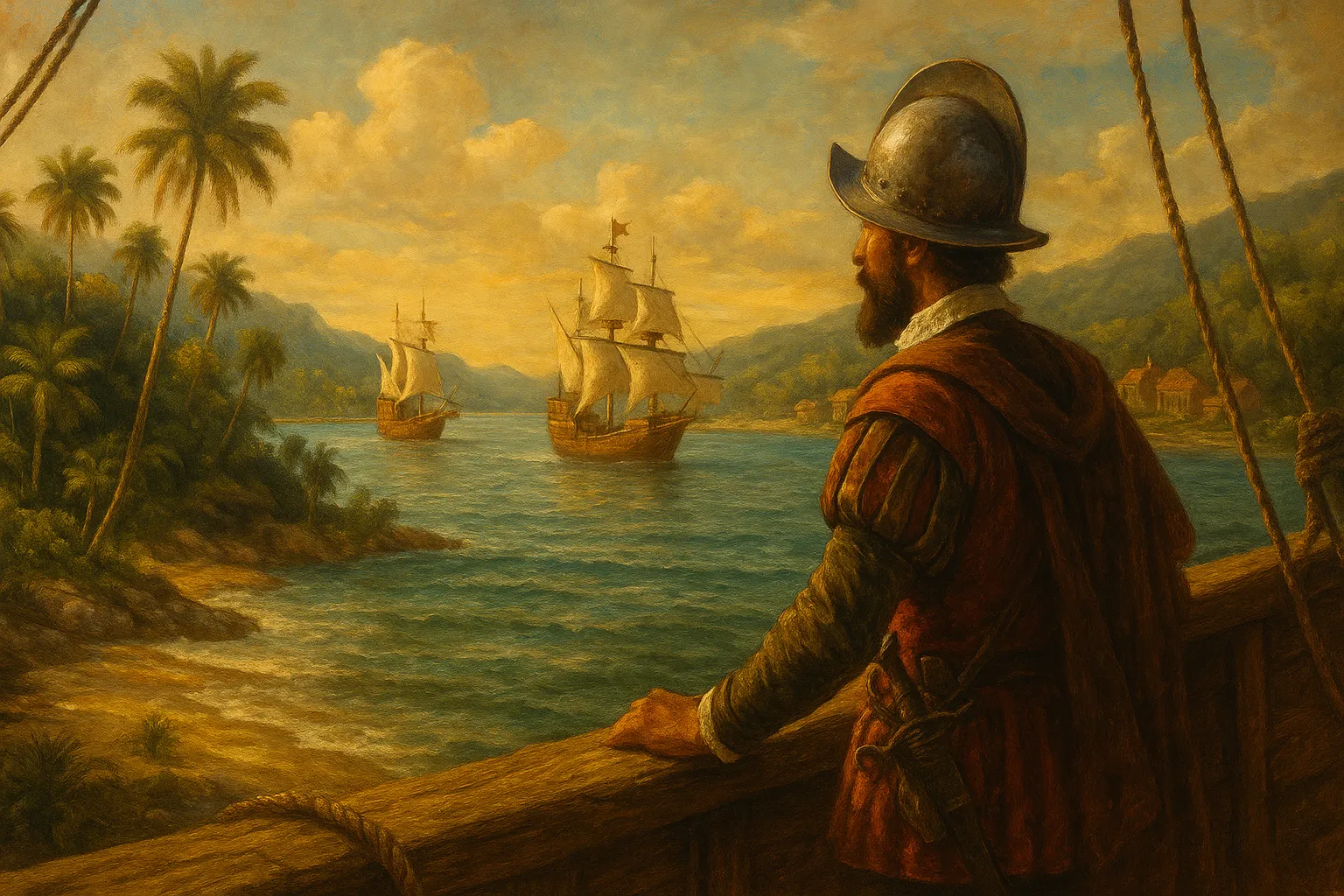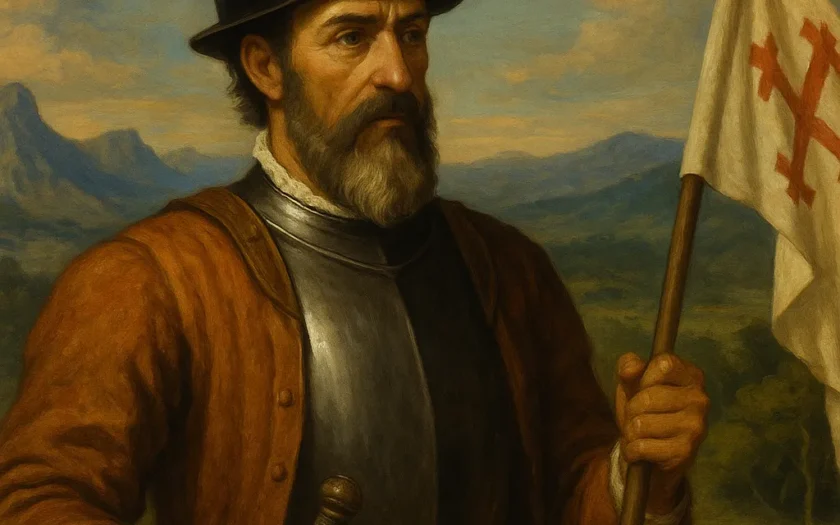Few figures embody the rise of Spanish conquest in the Americas as powerfully as Francisco Pizarro. Humble in origin, audacious in his ventures, and brutal in his conquests, his name is forever linked to the history of the Inca Empire and Spain’s expansion during the 16th century. This article examines his life, military campaigns, ethical dilemmas, and the complex legacy he left behind in both American and European history.
Humble Origins and Early Life
From Shepherd to Soldier
Francisco Pizarro was born around 1478 in Trujillo, Extremadura, Spain, the illegitimate son of a soldier, Gonzalo Pizarro, and Francisca González, a woman of modest means. His childhood was marked by poverty and a lack of formal education; it is said he was illiterate.
Seeking a better future, he joined the military and participated in Spain’s campaigns in the Kingdom of Naples, gaining combat experience that would prove crucial in his later role as a conquistador.
Journey to the New World

New Opportunities in the Americas
In 1502, Pizarro sailed to the Americas, first settling on the island of Hispaniola, then moving to Panama, where he gained recognition as an explorer and military leader under Spanish service.
In Panama, he partnered with fellow adventurers Diego de Almagro and priest Hernando de Luque to form an expedition aimed at exploring the southern coast, where rumors spoke of immense wealth and powerful kingdoms.
Early Expeditions of Exploration
Whispers of a Fabled Empire
Between 1524 and 1528, Pizarro led several expeditions along the Pacific coast of South America, facing immense challenges: disease, hunger, shipwrecks, and indigenous resistance. Yet these voyages confirmed rumors of a powerful empire to the south—the Inca Empire.
Driven by ambition, Pizarro sought direct authorization from the Spanish Crown to conquer these lands.
The Capitulations of Toledo
Royal Authorization
In 1529, after returning to Spain, Pizarro secured official backing through the Capitulations of Toledo, signed by King Charles I. This royal decree granted him permission to conquer Peru and appointed him Governor, Captain General, and Adelantado of any new territories he claimed.
With legal legitimacy secured, Pizarro organized a new expedition with greater resources.
The Inca Empire in Crisis

A Fragmented Empire
Upon Pizarro’s arrival, the Inca Empire was reeling from internal strife. A recent civil war between Atahualpa and Huáscar for imperial succession had severely weakened the state.
The Inca’s complex system of centralized administration and loyalty was unprepared for the arrival of the technologically advanced Spanish forces.
Encounter with Atahualpa
The Trap at Cajamarca
In 1532, Pizarro and his small force of about 180 soldiers and 27 horses reached Cajamarca, where Emperor Atahualpa was encamped. Despite being vastly outnumbered, Pizarro devised a bold ambush.
After initial contact, the Spanish captured Atahualpa in a surprise attack. The Inca ruler offered a massive ransom—rooms filled with gold and silver—which the Spaniards partially received.
Nevertheless, despite accepting the ransom, Pizarro executed Atahualpa in 1533, charging him with heresy and conspiracy.
March on Cuzco
The Fall of the Incan Capital
Following Atahualpa’s death, the Spanish advanced toward Cuzco, the sacred Incan capital, which they seized in November 1533 with minimal resistance as the empire’s political structure collapsed.
Pizarro installed a puppet ruler, Manco Inca Yupanqui, who would later lead rebellions against Spanish occupation.
Founding of Lima
The New Colonial Capital
In 1535, Pizarro founded Lima, named the City of Kings. Strategically located near the Pacific coast, Lima facilitated better communication with Spain and quickly became the political and administrative hub of Spanish rule in South America.
Lima would evolve into one of the continent’s most important cities during the colonial era.
Conflict with Diego de Almagro

Betrayal Between Partners
Disputes over territorial division and wealth led to escalating tensions between Pizarro and his former partner Diego de Almagro. After Almagro briefly occupied Cuzco, civil war erupted among the Spanish conquerors.
In 1538, Pizarro defeated Almagro at the Battle of Las Salinas and ordered his execution, securing absolute control over Peru but sowing the seeds of future vendettas.
The Assassination of Francisco Pizarro
Violent Death in Lima
Almagro’s supporters, known as Almagristas, sought revenge. On June 26, 1541, a group of conspirators stormed Pizarro’s palace in Lima and assassinated him.
Though his death ended his personal conquests, Spanish rule in Peru was already firmly established and would continue under the Viceroyalty.
Critical Assessment of His Legacy
Hero or Villain?
Francisco Pizarro remains one of the most controversial figures in world history:
- To some, he embodies Spanish courage, adventure, and expansion.
- To others, he represents colonial brutality, exploitation, and the destruction of a sophisticated indigenous civilization.
His military cunning, political maneuvering, and ruthless ambition make him a figure both fascinating and deeply divisive.
The Lasting Impact of the Conquest of Peru
Long-Term Consequences
Pizarro’s conquest had far-reaching consequences:
- Destruction of the Inca Empire.
- Establishment of Spanish colonial rule in South America.
- Exploitation of precious metals, especially silver from Potosí.
- Profound demographic, social, cultural, and religious transformations across the Andes.
The plunder of American resources reshaped global trade and fueled Spain’s economic dominance during the 16th century.
Historical Legacy
A Contradictory Legacy
Francisco Pizarro is remembered both as a legendary conquistador and as the destroyer of a millennia-old civilization. His story symbolizes:
- The rise of the Spanish Empire.
- The beginning of mestizo cultural and ethnic blending in Latin America.
- The violent clash between European and indigenous American civilizations.
- The ongoing ethical debate about the morality of conquest and colonialism.
His legacy continues to be reevaluated as historical perspectives evolve.

The life of Francisco Pizarro embodies the paradoxes of the Spanish conquest of the Americas: daring ambition, ruthless violence, monumental cultural shifts, and irreversible global change.
From humble beginnings to a violent death, Pizarro seized the opportunities of a rapidly changing world, orchestrating one of history’s most astonishing military conquests. Yet, the human and cultural cost of his enterprise remains a heavy burden on the collective memory of Andean societies and the broader Hispanic world.
Pizarro did not merely conquer an empire—he profoundly altered the histories of two continents.

